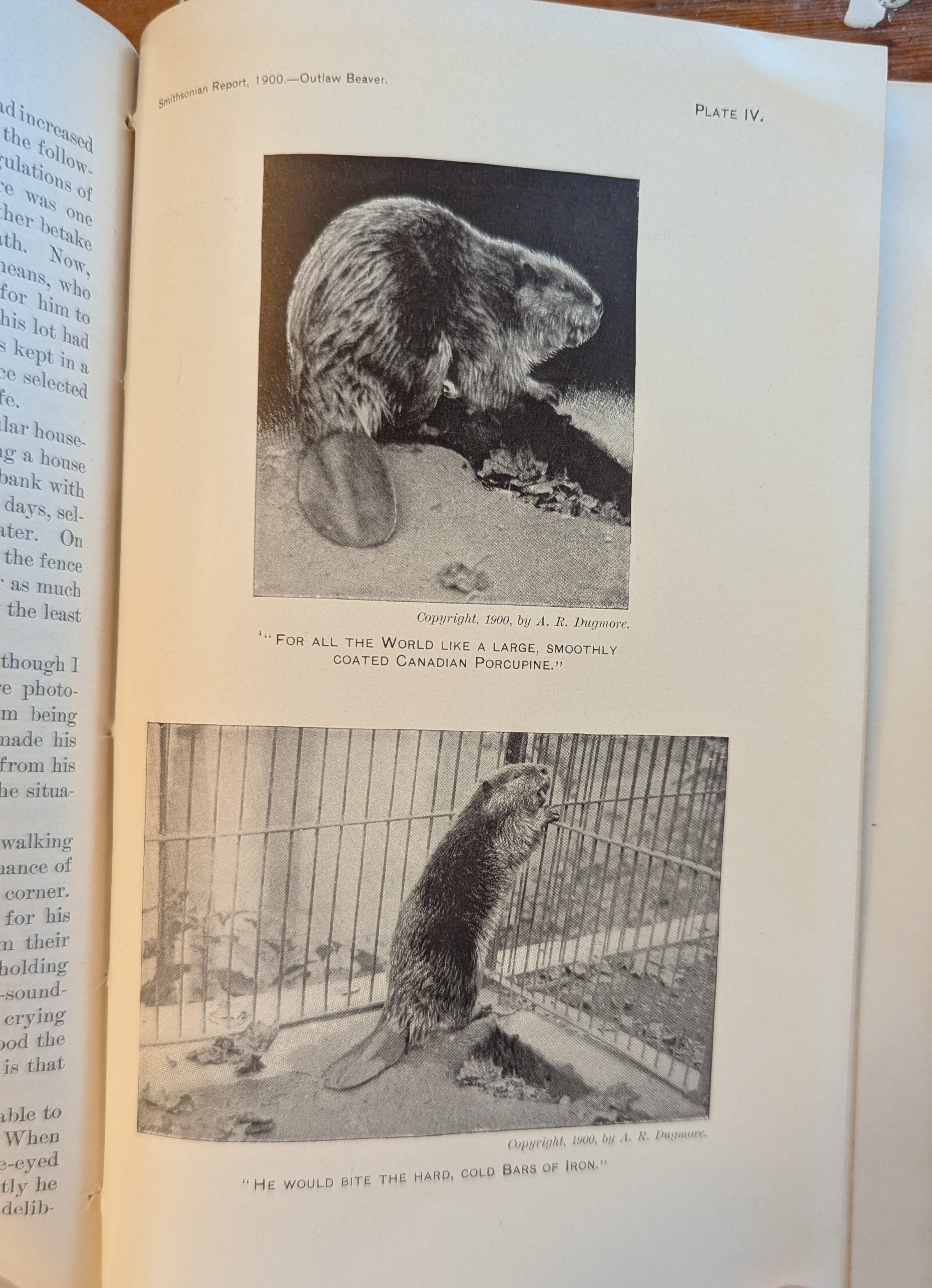Book Look, Smithsonian Annual Report
My local college library has a free-book cart that they roll out from time to time. I’m always on the lookout for treasures. Treasures, to me, are samples of older graphic styles and esoteric imagery.
The other day the shelf had a few of these Smithsonian Annual Report to the Regents. I adopted two of the 4 or 5 volumes to pore over in my own time. I thought some of you, my friends, might enjoy seeing what one of these gorgeous books contain.
The Report we’re looking at here is from the year ending 1900. 125 years ago is before anyone today was alive; this is a book of ghosts.
The book is arranged by reports from various Smithsonian editors and programs. The front matter is largely clerical and shares how much material — documents, artifacts, “evidence” — has been procured by the institution.
The two volumes are thick and heavy.
The title page has a lot of useful things on it. The distressed edges of the paper are subtle and irregular. The set type — a narrower version of a face I know as Modern No. 20 — has its quirkiness at the challenging kerning situations like the W-A in Washington and the B-O-A in Board.
The gem is the emblem that reads “For the increase and diffusion of knowledge among men per order (of the) Smithsonian Institution, Washington 1846.” The design elements are superb; torches with ribbons, a dotted line, and arced type, with a map of North America at the center of everything.
Even the rubber-stamp that the library has used has its own kind of charm… an uneven application of ink, off-center, off alignment, off the page.
A full-page map of the Zoological Park expansion. Note the nice compass rose and the hierarchy of type on the title.
An early section showcases the animals that are detained in the Smithsonian Zoological Park. Here are a few of their proudest animals.
A graphic example featuring a map of Smithsonian’s “science camp.” Most of the science is devoted to astronomy.
A few photographs showing Smithsonian’s astronomy camp.
There is a beautiful section of the book featuring solar phenomenon. There is an accordion-fold insert featuring the arc of the moon in front of the sun that is one of my favorite images in the book. Seems like a Bauhaus record cover to me.
The book has lots of graphs and charts that mostly are readable… some are too technical for me to comprehend.
There is a section that examines the astronomy tools in Peking, China. The illustrations are exquisite engravings. I’ve included some details to better reveal the technique.
The chapter that recounts a prototypical flying machine. Note the chart comparing a human and bird skeleton where both skeletons have (for some reason) a hoop through their skulls. What gives?
There is a signature on the night watercolor-looking illustrations but I couldn’t find anything easily about the artist.
A gorgeous section on a blimp — since were in the section about the sky — that is launched from a lake. Note the small fold-out poster showing the blimp at the apex of its flight.
A short section on meteorological kites. I suppose that’s how it was once done. Check out the massive kite reels that are attached to the wheelbarrow-like carts. That’s a great idea.
There are terrific graphics and illustrations throughout the book. Here are a few that I really like.
In 1900 photography was an exciting new way to capture evidence. In one section of the book the authors used photographs and illustration to visualize how sound waves behave.
A short section on the Smithsonian headquarters includes maps and floorplans that seem straight out of a Dungeons & Dragons adventure.
The section on exploration, something Smithsonian was particularly known for, starts with a report on the exploration of the “dark continent.” The fold-out map of Central Africa is terrific. I’ve included details.
The arctic explorations are wild. I love the image of a big, black mechanical beast forcing its way through the ice.
Looking now to history, the book features renderings of prehistoric creatures. I love all of the friendly faces.
Wildlife photography was a new thing in the late 1800s. The camera could capture animals in new, candid ways. This section contains an image of a bird perched on a twig with the whole background knocked out. It’s really pretty… and the pages that are dominated by a large, black vertical image are handsome, too.
Beavers and Gophers!
The chapter on Egyptian ruins includes a subsection on antique scales. There’s so much great reference here. The large six-sided column covered with cuneiform is amazing.
The last chapter talks about “the new spectrum.” I think it’s a wave range that was recently discovered. I love the massive fold-out poster!
The glossary shows the breadth of topics that are offered in this sturdy annual volume.
If you would like to explore archival volumes of Smithsonian Reports, they are generous with large, comprehensive (seeming) scans on their website. I encourage you to go there for more juicy Smithsonian stuff.





























































































































